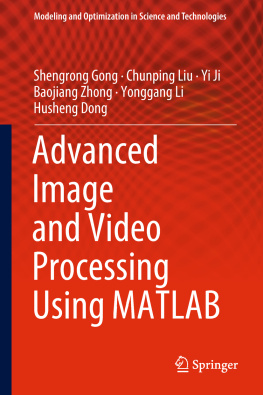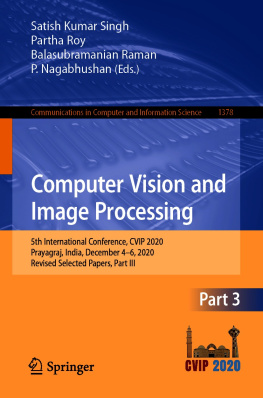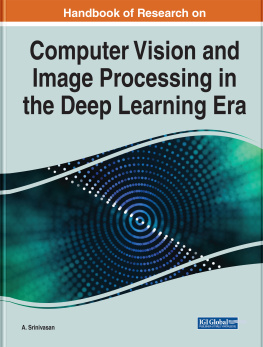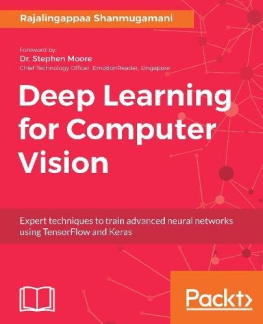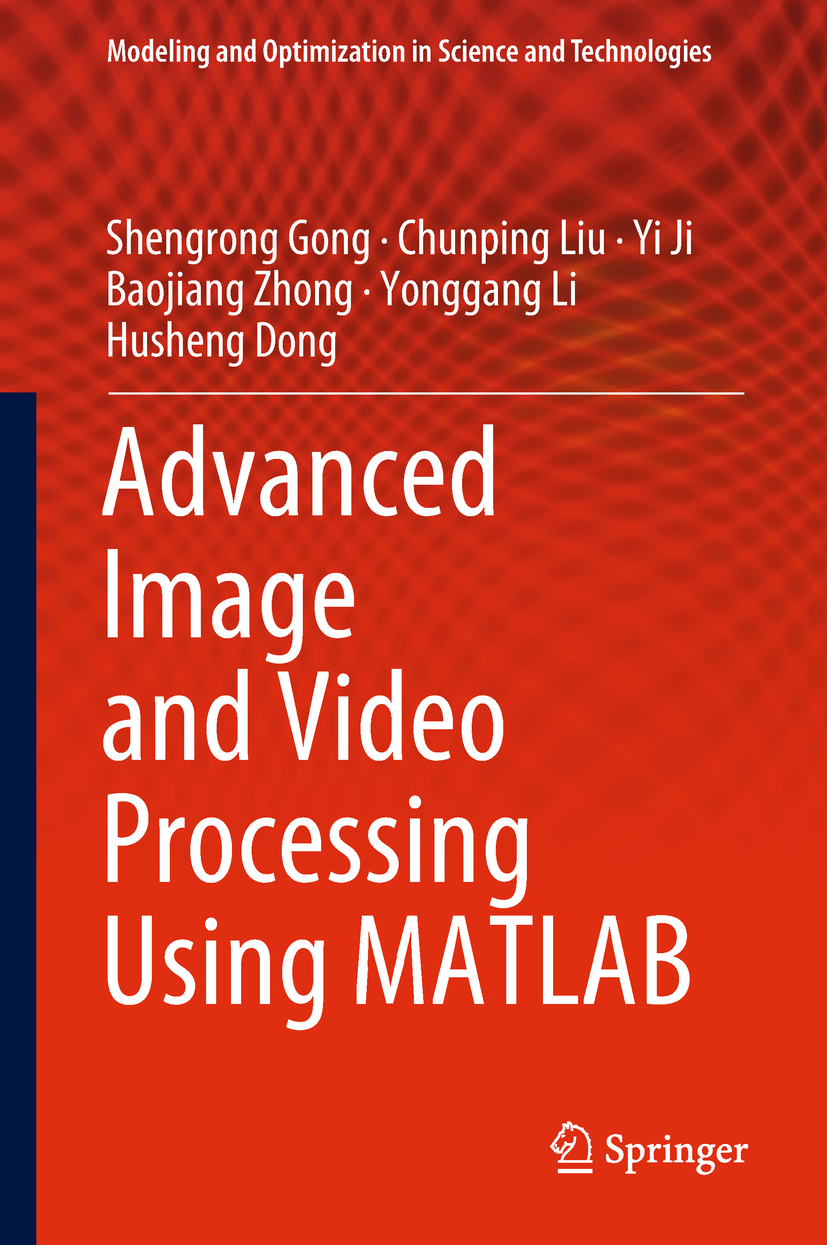Volume 12
Modeling and Optimization in Science and Technologies
Series Editors
Srikanta Patnaik
SOA University, Bhubaneswar, India
Ishwar K. Sethi
Oakland University, Rochester, USA
Xiaolong Li
Indiana State University, Terre Haute, USA
Editorial Board
Li Cheng, The Hong Kong Polytechnic University, Hong Kong
Jeng-Haur Horng, National Formosa University, Yulin, Taiwan
Pedro U. Lima, Institute for Systems and Robotics, Lisbon, Portugal
Mun-Kew Leong, Institute of Systems Science, National University of Singapore
Muhammad Nur, Diponegoro University, Semarang, Indonesia
Luca Oneto, University of Genoa, Italy
Kay Chen Tan, National University of Singapore, Singapore
Sarma Yadavalli, University of Pretoria, South Africa
Yeon-Mo Yang, Kumoh National Institute of Technology, Gumi, South Korea
Liangchi Zhang, The University of New South Wales, Australia
Baojiang Zhong, Soochow University, Suzhou, China
Ahmed Zobaa, Brunel University, Uxbridge, Middlesex, UK
The book series Modeling and Optimization in Science and Technologies ( MOST ) publishes basic principles as well as novel theories and methods in the fast-evolving field of modeling and optimization. Topics of interest include, but are not limited to: methods for analysis, design and control of complex systems, networks and machines; methods for analysis, visualization and management of large data sets; use of supercomputers for modeling complex systems; digital signal processing; molecular modeling; and tools and software solutions for different scientific and technological purposes. Special emphasis is given to publications discussing novel theories and practical solutions that, by overcoming the limitations of traditional methods, may successfully address modern scientific challenges, thus promoting scientific and technological progress. The series publishes monographs, contributed volumes and conference proceedings, as well as advanced textbooks. The main targets of the series are graduate students, researchers and professionals working at the forefront of their fields.
More information about this series at http://www.springer.com/series/10577
Shengrong Gong , Chunping Liu , Yi Ji , Baojiang Zhong , Yonggang Li and Husheng Dong
Advanced Image and Video Processing Using MATLAB
Shengrong Gong
School of Computer Science and Engineering, Changshu Institute of Technology, Changshu, Jiangsu, China
Chunping Liu
School of Computer Science and Technology, Soochow University, Suzhou, Jiangsu, China
Yi Ji
School of Computer Science and Technology, Soochow University, Suzhou, Jiangsu, China
Baojiang Zhong
School of Computer Science and Technology, Soochow University, Suzhou, Jiangsu, China
Yonggang Li
College of Mathematics Physics and Information Engineering, Jiaxing University, Jiaxing, Zhejiang, China
Husheng Dong
School of Computer Science and Technology, Soochow University, Suzhou, Jiangsu, China
ISSN 2196-7326 e-ISSN 2196-7334
Modeling and Optimization in Science and Technologies
ISBN 978-3-319-77221-9 e-ISBN 978-3-319-77223-3
https://doi.org/10.1007/978-3-319-77223-3
Library of Congress Control Number: 2018948687
Springer International Publishing AG, part of Springer Nature 2019
This work is subject to copyright. All rights are reserved by the Publisher, whether the whole or part of the material is concerned, specifically the rights of translation, reprinting, reuse of illustrations, recitation, broadcasting, reproduction on microfilms or in any other physical way, and transmission or information storage and retrieval, electronic adaptation, computer software, or by similar or dissimilar methodology now known or hereafter developed.
The use of general descriptive names, registered names, trademarks, service marks, etc. in this publication does not imply, even in the absence of a specific statement, that such names are exempt from the relevant protective laws and regulations and therefore free for general use.
The publisher, the authors and the editors are safe to assume that the advice and information in this book are believed to be true and accurate at the date of publication. Neither the publisher nor the authors or the editors give a warranty, express or implied, with respect to the material contained herein or for any errors or omissions that may have been made. The publisher remains neutral with regard to jurisdictional claims in published maps and institutional affiliations.
This Springer imprint is published by the registered company Springer Nature Switzerland AG
The registered company address is: Gewerbestrasse 11, 6330 Cham, Switzerland
Preface
Digital image processing mainly focuses on the research of signal processing, such as image contrast adjustment, image coding, image denoising and filtering. It is different that Image analysis emphasizes describing images with symbolic representations, analysis, interpretation, and recognition. Along with the boom in artificial intelligent and deep learning, digital image processing is going deeper and more advanced. People start the researches in simulating the human vision to see, to understand, and even to explain the real world using three techniques: image segmentation, image analysis, and image understanding. The Image segmentation is to extract the features such as the edges and regions for image analyzing, recognition, and understanding. Image analysis is to extract intelligent information from underlying features and their relationship using mathematical models and Image processing techniques. Image analysis and image processing are closely related. Although there may be a certain degree of overlapping, they are different in essence. Therefore, image analysis is more related to pattern recognition and computer vision. It is generally used to analyze the underlying features and superstructures by some mathematical models. The researches of image analysis are mainly focused on content-based image retrieval, face recognition, emotion recognition, optical character recognition, handwriting recognition, biomedical image analysis, video object extraction. The Image understanding is to further understand the meanings and scenario explanations by researching the properties and relations of the features and objects. The objects for image understanding are symbols from description; the process is similar to human brain.
Corresponding to image analysis, video analysis is to analyze the video frames of surveillance camera using computer vision techniques. It is also able to filter the background such as wind, rain, snow, fallen leaves, birds, and floating flags. It is so called object tracking in complex background. Due to the variant illusion, motion, occlusion, color, and complex background, the difficulty of object detection and tracking algorithm design is increased.
The steps in image and video analysis mainly include segmentation, classification, and explanation. The classification process normally extracts the features by SIFT and LBP. With the use of deep learning techniques, people start using deep feature by extracting automatically for image classification, scenario classification, and behaviors analysis.

